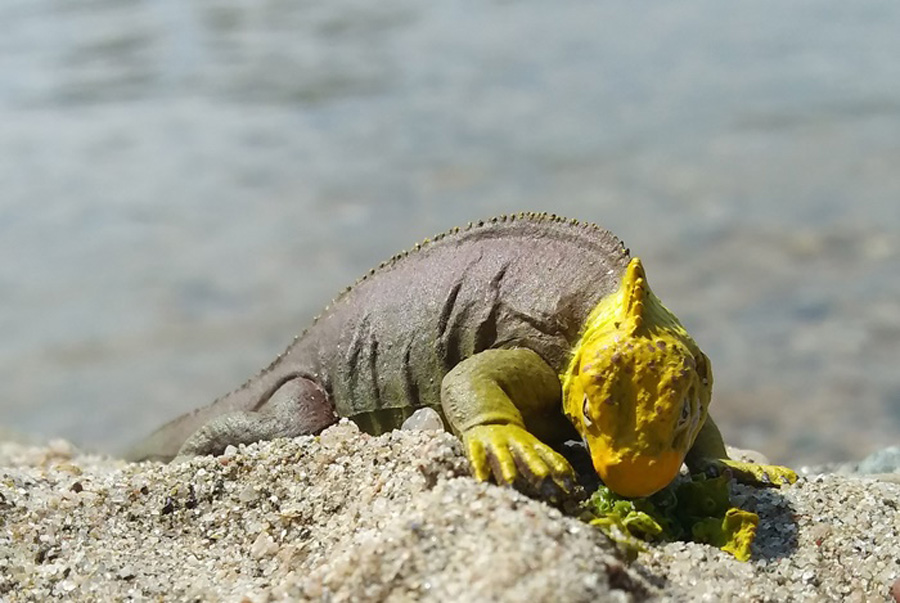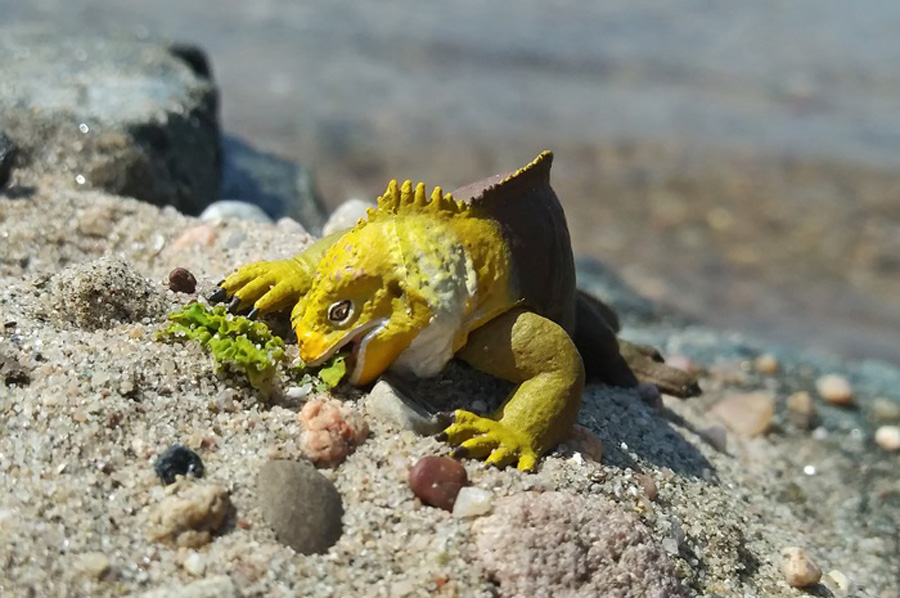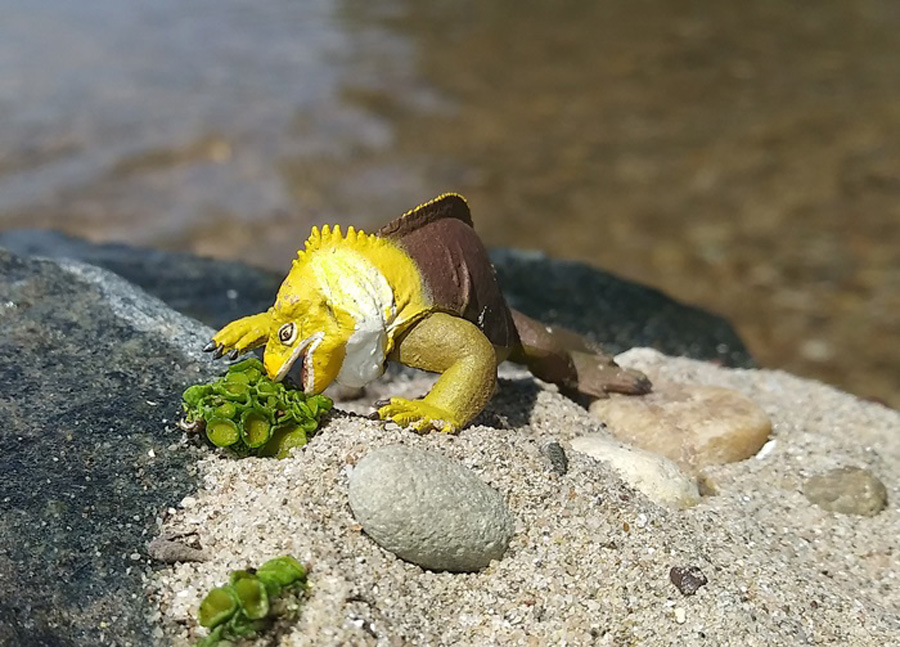Review and images by Lanthanotus; edited by bmathison1972
“Ugly” and of a “singularly stupid appearance“ were two of the things Charles Darwin had to say about the Galapagos Land Iguana, Conolophus subcristatus. His judgement about their more popular aquatic relatives, the Marine Iguana, Amblyrhynchus cristatus was not much better, those he describes as the “most disgusting”. Beauty lies in the eyes of the beholder however, and their appearance is a consequence of their environment, as Darwin also noted: “They assuredly well-become the land they inhabit.”

The Galapagos Islands off the shore of Ecuador are most remarkable for their unique fauna. The Galapagos land iguana is one of three species in the genus. It shares a common ancestor with the marine iguana and is derived from some drifted specimen, most likely of the Ctenosaurus group, a genus of mostly large iguanas which is distributed in Central and South America. Despite being located in the tropics and of volcanic origin, the Galapagos Archipelago never established the lush appearance of tropical rainforest flora and fauna as other volcanic islands. Instead, the climate is very hot and dry for the most parts, the landscape shaped by bleak rocks and only a thin layer of dirt.

In consequence, the marine iguanas developed to exploit the near shore algae, while the land iguana other feeds mostly on the prickly pear cacti, Opuntia sp.. Thy are not fussy about this source of nutrients and water and eat the flowers, pads and spines alike.

Now, with the harsh environment in mind one may still not call them beautiful, but they have certainly an exotic and archaic charm that bestows them an interesting appearance.

So how did Kaiyodo translate this into a figure? Most marvelously, is the short answer in my opinion. Even for a Kaiyodo figure, this one is small, with just 5.5 cm in direct line. Nevertheless, Kaiyodo packed in all the detailing that we expect from them. The proportions are spot on, the body stocky and the tail comparably short. The neck is thick and sharp spines run along the neck down the back until three quarters of the tail where they are so tiny, that you can barely see them without a magnifying glass. The fingers and toes are most well proportioned and the blunt head covered in bulgy scales that gave the lizards its German name “Drusenkopf” (druse head). Folds and wrinkles give the finely textured skin a natural appearance and the paint job just underlines the whole effort in the most effective way. The figure represents a male in breeding colors, so the head is decked a bright yellow with white sides a the neck.

The figure is originally mounted on a flat rock on top of small black platform which has the Japanese and Latin names of the animal written on a golden plaque. The figure has small pegs on three of its feet that fit perfectly in the rock, however, the fingers and toes doe not align to the rock perfectly. The pose may seem a weird choice as it is hard to appreciate the details in the head as that is lowered in between the front legs to munch on a small green pad. But this pose is most natural and grants the figure a most natural and unique charm.

No date of release is currently known to me (Editor’s note: this set was released in 2017), but you can find the figure on eBay usually; the price varies, though. I got mine for 9 € and it is totally worth it. There are not a lot of figures of this animal around anyway, but I dare say that we would be hard pressed to find a more accurate representation of this animal in the next decades.
Disclaimer: links to Ebay and Amazon on the AnimalToyBlog are affiliate links, so we make a small commission if you use them. Thanks for supporting us!




It’s a great figure, one that I had been hoping to get but can’t find one with a reasonable price.
Love the photos, they look real!
I agree. I have one. I was hesitant to get it because of its small size, but it’s such a nice figure and better than its Bandai counterpart.